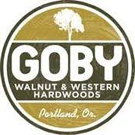
BURL: A BEGINNER'S GUIDE
If you’ve ever seen a tree with what looks like a big lump on its’ trunk, chances are good you’ve seen a burl. If you’ve ever seen the dashboard inside some luxury cars, or certain fancy guitars, or a turned wooden pen with what looks like swirling grain, you’ve probably seen what’s inside a burl. In this article, we’ll talk about what a burl actually is, and what you can do with them- when it’s cut the right way, burl can be a show-stopping addition to your project.
So first off, what is burl, exactly? Technically speaking, a burl is a growth or nodule on the side of a tree’s trunk where the wood grain stops growing up, and instead starts growing out. This results in a wild-looking grain pattern in the wood, which can be highly figured like these pieces of Pacific maple burl:

Burls happen seemingly at random, and we’re still not sure what causes them- this means that burl wood is relatively rare, which also means a higher price point than regular lumber. That’s why historically speaking, burl has been used as an inlay or a veneer for certain “status” purchases- the dashboard inside a Rolls-Royce, for example. Historically speaking, an addition of burl to a custom-made item was usually seen as a sign of wealth or opulence. Plus, it’s just really beautiful wood.
Another reason why people are drawn to burl is its’ live edge- there’s simply nothing like it in a regular board. Because burls form as big lumps, any live edge you get is going to have more of a curved arc to it. Depending on the species, burls can also have a lot of sprouting. This can result in a very “spiny” exterior, which only adds to the natural look of a live edge.
So what can you do with burl? Because of its’ smaller size in comparison to regular lumber, many woodworkers see that as a limitation. Don’t be fooled- a constraint like that can become a jumping-off point for creative thinking! A single burl block can be resawn and mounted on a substrate to make a small-to-medium sized veneered panel, or added as an inlay into a larger project to contribute visual interest. Luthiers often use burl tops for guitar bodies or headstocks, and turners love burl pieces to make smaller items like pen blanks. If you’ve got a project that needs a touch of class, burl is a great way to really make it pop!
